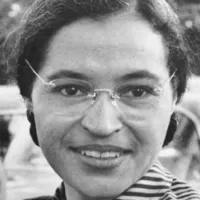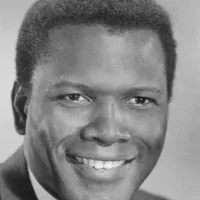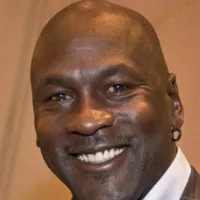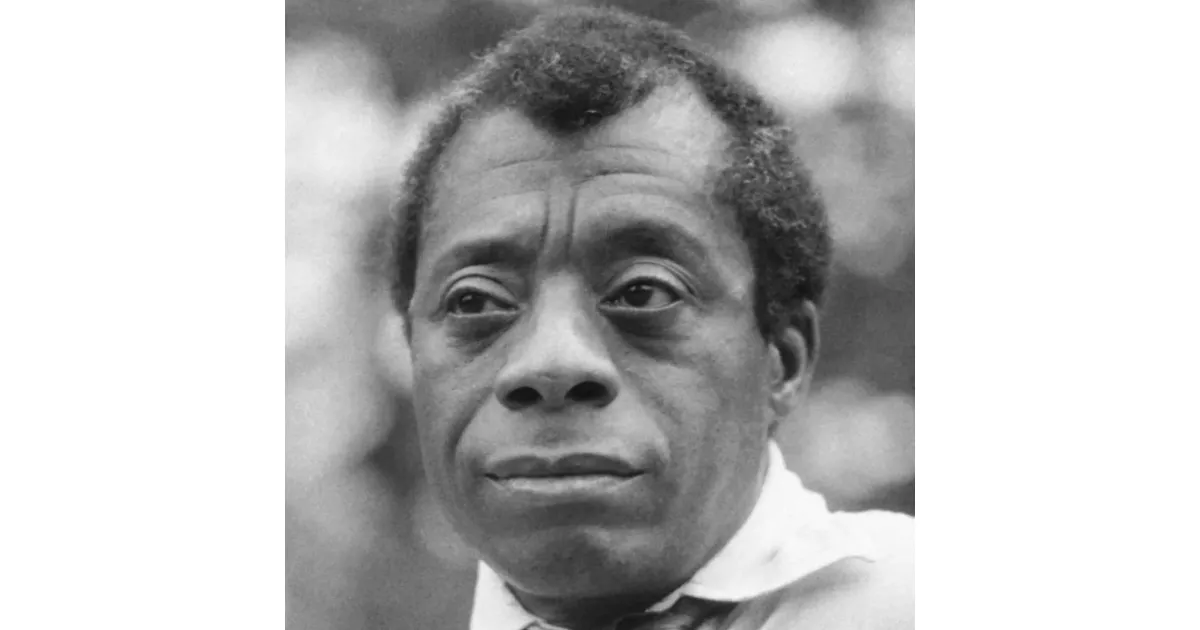Discover the defining moments in the early life of James Baldwin. From birth to education, explore key events.
James Baldwin was a prominent African-American writer and civil rights activist. Known for his eloquent prose and insightful social commentary, Baldwin's essays, novels, and plays explored themes of race, sexuality, class, and identity in America. His works like "Go Tell It on the Mountain" and "Notes of a Native Son" solidified his place as a major literary figure and a powerful voice during the Civil Rights Movement. Baldwin challenged societal norms and confronted the complexities of the American experience, leaving a lasting impact on literature and the fight for social justice.
1903: Emma Berdis Jones's Birth
In 1903, Emma Berdis Jones, James Baldwin's mother, was born on Deal Island, Maryland. She later fled racial segregation and discrimination in the South during the Great Migration.
1916: Reference to James Joyce's A Portrait of the Artist as a Young Man
In 1916, James Joyce's "A Portrait of the Artist as a Young Man" was published, and Baldwin's biographer draws parallels between this book and Baldwin's "Go Tell It on the Mountain".
1919: David Baldwin moved to Harlem
In 1919, David Baldwin left the South for Harlem.
August 2, 1924: James Baldwin's Birth
On August 2, 1924, James Arthur Baldwin, born James Arthur Jones, was born in Harlem, New York City. He would later become a renowned African-American writer and civil rights activist.
1927: Emma Berdis Jones's Marriage to David Baldwin
In 1927, Emma Berdis Jones married David Baldwin, a laborer and Baptist preacher, who became James Baldwin's stepfather.
1937: Baldwin joined Mount Calvary of the Pentecostal Faith Church
In 1937, feeling uncomfortable with his attraction to men, Baldwin sought refuge in religion and joined the Mount Calvary of the Pentecostal Faith Church.
1937: Baldwin's First Published Essay
In the autumn of 1937, Baldwin's first published essay, "Harlem—Then and Now", appeared in the Douglass Pilot, after research at the library on 42nd Street.
1938: Baldwin graduated from Frederick Douglass Junior High
In 1938, Baldwin graduated from Frederick Douglass Junior High School.
1938: Baldwin's Acceptance to De Witt Clinton High School
In 1938, Baldwin was accepted at De Witt Clinton High School in the Bronx, where he matriculated that fall.
1941: Baldwin Completed His High School Diploma
In 1941, Baldwin completed his high school diploma at De Witt Clinton.
1941: Baldwin Delivered His Final Sermon
In 1941, Baldwin delivered his final sermon at Fireside Pentecostal, realizing his authority as a speaker. He also had a conversation with David Baldwin about his desire to write rather than preach.
1941: Baldwin left school to support his family
In 1941, Baldwin left school in order to earn money to help support his family. He secured a job helping to build a United States Army depot in New Jersey.
1942: Baldwin worked laying tracks for the military
In 1942, Emile Capouya helped Baldwin get a job laying tracks for the military in Belle Mead, New Jersey. Baldwin experienced prejudice that angered him.
June 1943: Baldwin returned to Harlem after losing his track-laying job
In June 1943, Baldwin returned to Harlem to live with his family after being fired from the track-laying job, and then losing a meat-packing job too. He became unstable and had his first nervous breakdown.
1943: Lucien Carr Murders David Kammerer
In 1943, Columbia University undergraduate Lucien Carr murdered David Kammerer near the Hudson River after Kammerer made sexual advances. This event later inspired the murder plot in Baldwin's novel "Giovanni's Room".
1943: David Baldwin's Death and Funeral
In 1943, David Baldwin, James Baldwin's stepfather, was committed to a mental asylum and died of tuberculosis on July 29. His funeral was held on James Baldwin's 19th birthday, around the time the Harlem riot began. James visited him the day before, and wrote about him in his essay "Notes of a Native Son".
1944: Baldwin Met Marlon Brando
In 1944, Baldwin met Marlon Brando at a theater class at The New School, and the two became fast friends.
1944: Lucien Carr Murders David Kammerer
In 1944, Columbia University undergraduate Lucien Carr murdered David Kammerer near the Hudson River after Kammerer made sexual advances. This event later inspired the murder plot in Baldwin's novel "Giovanni's Room".
1945: Baldwin Met Richard Wright
In 1945, Baldwin met Richard Wright, hoping to get him interested in his manuscript "Crying Holy", which would later become Go Tell It On The Mountain.
1945: Baldwin Started a Literary Magazine
In 1945, Baldwin started a literary magazine called The Generation with Claire Burch.
1946: Eugene Worth's Suicide
In 1946, Eugene Worth, a man Baldwin was in love with, died by suicide after jumping from the George Washington Bridge.
November 11, 1948: Baldwin moved to Paris
On November 11, 1948, with funding from a Rosenwald Fellowship, Baldwin flew from New York to Paris. He gave most of the scholarship funds to his mother and hoped for a more peaceable existence there.
1948: Baldwin reunited with Wright in Paris
In 1948, Baldwin reunited with Richard Wright in Paris, France, though their relationship deteriorated soon after.
December 1949: Baldwin arrested in Paris
In December 1949, James Baldwin was arrested and jailed in Paris for receiving stolen goods, specifically bedsheets taken from a hotel by an American friend. The charges were dismissed several days later.
1949: Baldwin meets Lucien Happersberger
In 1949, James Baldwin met Lucien Happersberger, with whom he fell in love. Despite Happersberger's subsequent marriage, they later reconciled, and Happersberger remained by Baldwin's side until his death.
1950: Publication of "Equal in Paris"
In 1950, James Baldwin published his essay "Equal in Paris" in Commentary, reflecting on his experience of being arrested and jailed in Paris in December 1949. He wrote about how he was no longer seen as a "despised black man" but simply as an American.
1950: Baldwin reads Joyce's A Portrait of the Artist as a Young Man
In 1950, James Baldwin read James Joyce's "A Portrait of the Artist as a Young Man" in Paris, drawing parallels between Joyce's flight from Ireland and Baldwin's own escape from Harlem.
1951: First trip to Loèches-les-Bains, Switzerland
Beginning in the winter of 1951, James Baldwin and Lucien Happersberger took trips to Loèches-les-Bains in Switzerland, where Happersberger's family owned a chateau.
April 1952: Baldwin returns to the United States
In April 1952, James Baldwin sailed back to the United States on the SS Île de France to settle terms with Knopf for publishing "Go Tell It on the Mountain".
1953: Beauford Delaney arrives in France
In 1953, Beauford Delaney's arrival in France was marked as a significant personal event in James Baldwin's life. Also around this time, Baldwin's circle of friends shifted towards Black American expatriates.
May 1954: Supreme Court Orders School Desegregation
In May 1954, the United States Supreme Court ordered schools to desegregate "with all deliberate speed", marking a pivotal moment in the Civil Rights Movement, which Baldwin followed from Paris.
August 1955: Murder of Emmett Till
In August 1955, Emmett Till was murdered in Money, Mississippi, and his killers were acquitted. This event deeply affected Baldwin and influenced his writing, particularly "Blues for Mister Charlie".
October 1955: Baldwin returns to Paris
In October 1955, James Baldwin returned to Paris after spending several weeks in Washington, D.C., collaborating with Owen Dodson for the premiere of "The Amen Corner".
December 1955: Rosa Parks Arrested
In December 1955, Rosa Parks was arrested in Montgomery for refusing to give up her seat on a bus, an event that galvanized the Civil Rights Movement and was followed by Baldwin from Paris.
February 1956: Autherine Lucy Admitted and Expelled from University of Alabama
In February 1956, Autherine Lucy was admitted to the University of Alabama but was later expelled after white students rioted. This event contributed to Baldwin's growing sense of urgency to return to the United States.
March 1956: Faulkner's Controversial Comment on Desegregation
In March 1956, William Faulkner stated that he would side with white Mississippians, even if it meant shooting Black people, during the desegregation. This inspired Baldwin to write the essay "William Faulkner and Desegregation".
September 1956: Attendance at Congress of Black Writers and Artists
In September 1956, James Baldwin attended the Congress of Black Writers and Artists, but he found the conference disappointing due to its reliance on European themes.
July 1957: Baldwin Sails for New York
In July 1957, after a visit with Édith Piaf, James Baldwin set sail for New York, deciding to return to the United States sooner than initially planned, despite Beauford Delaney's distress over his departure.
1957: Decision to return to the United States
In 1957, James Baldwin decided to return to the United States. In early 1956, he decided to enjoy what was to be his last year in France.
August 28, 1963: Baldwin appears at the March on Washington
On August 28, 1963, James Baldwin participated in the March on Washington for Jobs and Freedom, alongside Harry Belafonte, Sidney Poitier, and Marlon Brando, marking a significant moment in the Civil Rights Movement.
1964: Baldwin Interview with Robert Penn Warren
In 1964, during an interview with Robert Penn Warren for the book "Who Speaks for the Negro?", James Baldwin expressed his views on the Civil Rights Movement. He characterized it as a unique revolution focused on establishing a union and radically transforming American mores, impacting both Black people and all citizens of the country.
March 1965: Baldwin joins marchers from Selma to Montgomery
In March 1965, James Baldwin joined marchers in the Selma to Montgomery Marches, walking 50 miles to the capitol in Montgomery under the protection of federal troops. This participation highlighted Baldwin's commitment to the Civil Rights Movement and his advocacy for federal intervention to protect Black citizens.
1965: Debate with William F. Buckley
In 1965, James Baldwin debated William F. Buckley at the Cambridge Union in the UK, arguing against the proposition that the American dream had been achieved at the expense of African Americans, and overwhelmingly won the vote from the student body.
1968: Baldwin signs war tax protest pledge
In 1968, James Baldwin signed the "Writers and Editors War Tax Protest" pledge, committing to refuse income tax payments as a form of protest against the Vietnam War. He was also a supporter of the Fair Play for Cuba Committee, leading the FBI to create a file on him.
1970: Baldwin Settles in Saint-Paul-de-Vence
In 1970, James Baldwin settled in Saint-Paul-de-Vence in the south of France, making his home a gathering place for friends and artists like Beauford Delaney, Harry Belafonte, and Sidney Poitier.
1979: Baldwin calls the Civil Rights movement "the latest slave rebellion"
In a 1979 speech at UC Berkeley, James Baldwin referred to the Civil Rights Movement as "the latest slave rebellion,", offering a perspective on the struggle for equality and justice in America.
1981: Atlanta Murders
The Atlanta murders of 1979-1981, which inspired "The Evidence of Things Not Seen", occurred.
December 1, 1987: James Baldwin's Death
On December 1, 1987, James Baldwin died, marking the end of the life of the acclaimed African-American writer and civil rights activist.
1992: Hampshire College establishes James Baldwin Scholars program
In 1992, Hampshire College in Amherst, Massachusetts, established the James Baldwin Scholars program (JBS). This urban outreach initiative honors Baldwin, who taught at the college in the early 1980s, by providing talented students of color with the support they need to succeed in college.
Mentioned in this timeline

Google LLC is a multinational technology company specializing in online...

Martin Luther King Jr was a pivotal leader in the...

Rosa Parks was a pivotal figure in the American Civil...

Harry Belafonte was a prominent American singer actor and civil...

Sidney Poitier was a trailblazing Bahamian-American actor director activist and...

Malcolm X was a prominent African American activist and minister...
Trending

30 days ago George Strait Announces Lubbock Concerts: Tickets on Sale November 21st!

4 months ago Celebrity Cruises Ship Loses Power, Drifts Off Italy Coast for Three Hours

6 months ago Brokeback Mountain's 20th Anniversary: Challenging Hollywood and impacting audiences, starring Heath Ledger.

5 months ago Meryl Streep, Anne Hathaway, and Stanley Tucci in Devil Wears Prada Sequel

2 months ago Steve Harvey's Wild Reaction Causes Him to Drop Cards on Family Feud
Snoqualmie Pass is a mountain pass in Washington State serving as a crucial route for Interstate I- through the Cascade...
Popular

Candace Owens is an American conservative political commentator and author...

Ilhan Omar is an American politician currently serving as the...

XXXTentacion born Jahseh Dwayne Ricardo Onfroy was a controversial yet...

Charles James Charlie Kirk was a prominent American right-wing political...

Bill Gates an American businessman and philanthropist revolutionized personal computing...

Michael Jordan often known as MJ is a businessman and...



